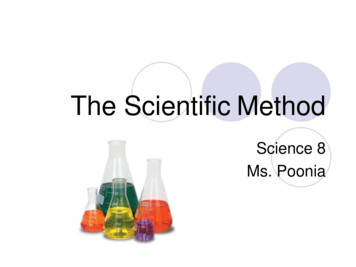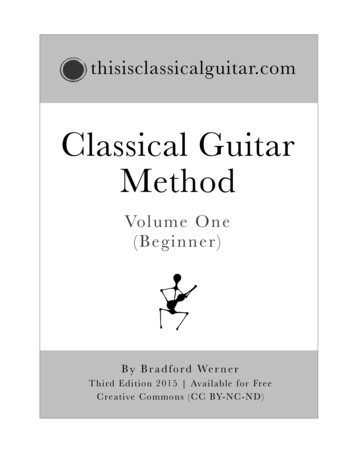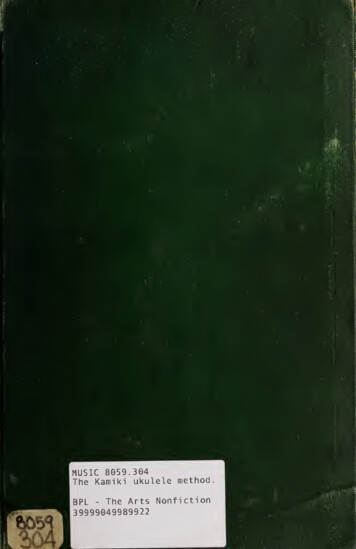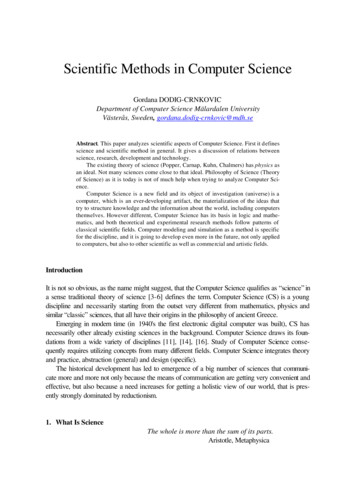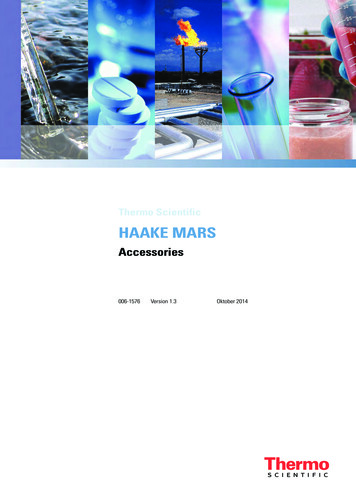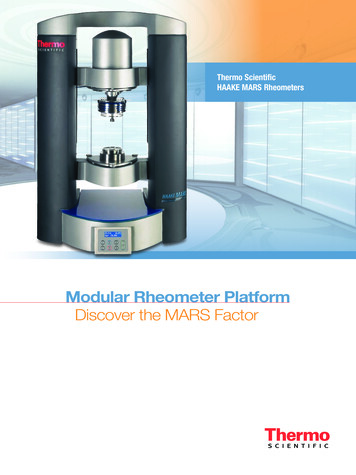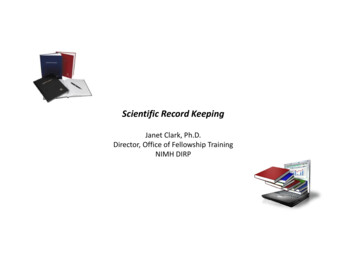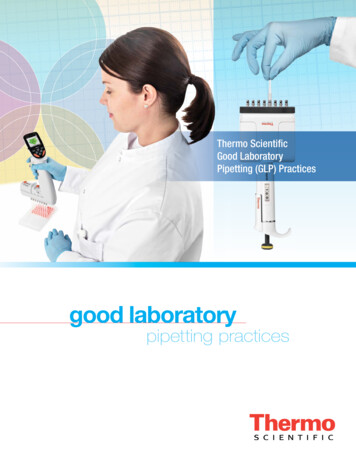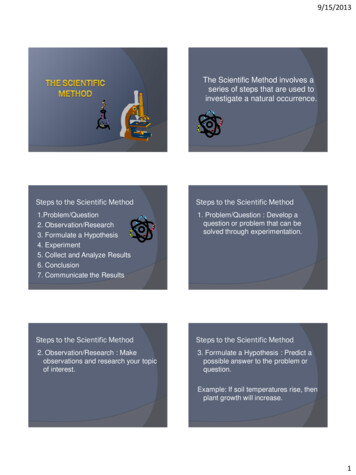
Transcription
9/15/2013The Scientific Method involves aseries of steps that are used toinvestigate a natural occurrence.Steps to the Scientific MethodSteps to the Scientific Method1.Problem/Question2. Observation/Research3. Formulate a Hypothesis4. Experiment5. Collect and Analyze Results6. Conclusion7. Communicate the Results1. Problem/Question : Develop aquestion or problem that can besolved through experimentation.Steps to the Scientific MethodSteps to the Scientific Method2. Observation/Research : Makeobservations and research your topicof interest.3. Formulate a Hypothesis : Predict apossible answer to the problem orquestion.Example: If soil temperatures rise, thenplant growth will increase.1
9/15/2013Steps to the Scientific MethodSteps to the Scientific Method4. Experiment : Develop and follow aprocedure . Include a detailedmaterials list. The outcome must bemeasurable (quantifiable).5. Collect and Analyze Results : Modifythe procedure if needed. Confirm theresults by retesting. Include tables,graphs, and photographs.Steps to the Scientific MethodSteps to the Scientific Method6. Conclusion : Include a statementthat accepts or rejects thehypothesis. Make recommendationsfor further study and possibleimprovements to the procedure.7. Communicate the Results : Beprepared to present the project to anaudience. Expect questions from theaudience.Steps to the Scientific MethodProblem/QuestionLet’s put our knowledge of theScientific Method to a realisticexample that includes some of theterms you’ll be needing to use andunderstand.John watches his grandmother bake bread.He ask his grandmother what makes thebread rise. She explains that yeastreleases a gas as it feeds on sugar . Johnwonders if the amount of sugar used inthe recipe will affect the size of the breadloaf.2
9/15/2013Observation/ResearchHypothesisJohn researches the areas of baking andfermentation and tries to come up with away to test his question. He keeps all ofhis information on this topic in a journal.The hypothesis is an educated guess aboutthe relationship between the independentand dependent variables.Note: These variables will be defined in thenext few slides.Manipulated VariableResponding VariableThe manipulated variable is a factor that’sintentionally varied by the experimenter.John is going to use 25g., 50g., 100g.,250g., 500g. of sugar in his experiment.The responding variable is the factor thatmay change as a result of changes madein the independent variable.In this case, it would be the size of the loafof bread.Control GroupControl GroupIn a scientific experiment, the control is thegroup that serves as the standard ofcomparison.The control group is exposed to the sameconditions as the experimental group,except for the variable being tested.The control group may be a “no treatment”group.All experiments should have a control group.3
9/15/2013ConstantsConstantsConstants - All other factors stay the sameso that any observed changes in thebread can be attributed to the variation inthe amount of sugar.They might include: Other ingredients to thebread recipe, oven used, rise time, brandof ingredients, cooking time, type of panused, air temperature and humidity wherethe bread was rising, oven temperature,age of the yeast ExperimentTrialsJohn writes out his procedure for hisexperiment along with a materials list inhis journal.Trials refer to replicate groups that areexposed to the same conditions in anexperiment. John is going to test eachsugar variable 3 times.He has both of these checked by his teacherwhere she checks for any safetyconcerns.Collect and Analyze ResultsCollect and Analyze ResultsJohn comes up with a table he can use torecord his data.John examines his data and notices that hiscontrol worked the best in this experiment,but not significantly better than 100g. ofsugar.John gets all his materials together andcarries out his experiment.4
9/15/2013ConclusionConclusionJohn rejects his hypothesis, but decides tore-test using sugar amounts between 50g.and 100g.John finds that 70g. of sugar produces thelargest loaf.His hypothesis is accepted.A Little Practice with the Scientific MethodA Little Practice with the Scientific MethodThe next slide is a Bart Simpson scenario.Read it carefully, and see whether youcan answer the associated questions. A Little Practice with the Scientific Method1.2.3.4.5.What was Bart’s hypothesis?Identify the Control group.Identify the manipulated and respondingvariables.What might be some of the possibleconstants?What should Bart’s conclusion be?Bart Simpson believes that mice exposed tomicrowaves will become extra strong.He decides to perform this experiment by placing10 mice in a microwave for 10 secondsHe compared these 10 mice to another 10 micethat had not been exposed.His test consisted of a heavy block of wood thatblocked the mouse food.He found that 8 out of the 10 microwaved micewere able to push the block away.7 out of 10 non-microwaved mice were able to dothe same.ANSWERSHypothesis - Mice exposed tomicrowaves will be extra strong2.Control Group - The unexposed mice3.Manipulated variable- microwavesResponding variable- strength4.Constraints - Same block of wood, samefood, time of day, approx same size mice,etc.5.Conclusion - Microwave exposure doesnot significantly change the strength ofmice.1.5
A Little Practice with the Scientific Method Bart Simpson believes that mice exposed to microwaves will become extra strong. He decides to perform this experiment by placing 10 mice in a microwave for 10 seconds He compared these 10 mice to another 10 mice that had not been exposed. His test consisted of a heavy block of wood that blocked the mouse food. He found that 8 out of the 10 .
